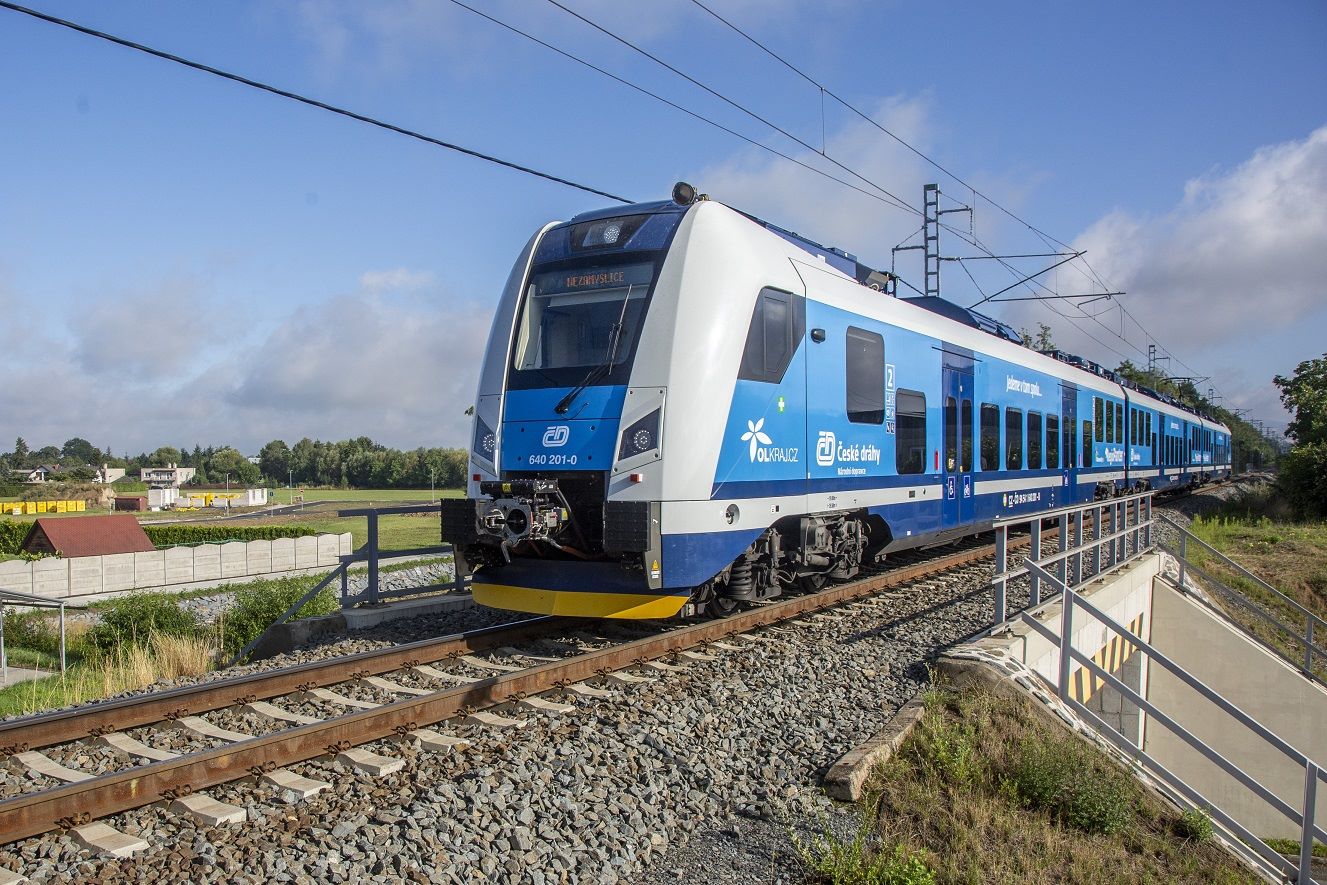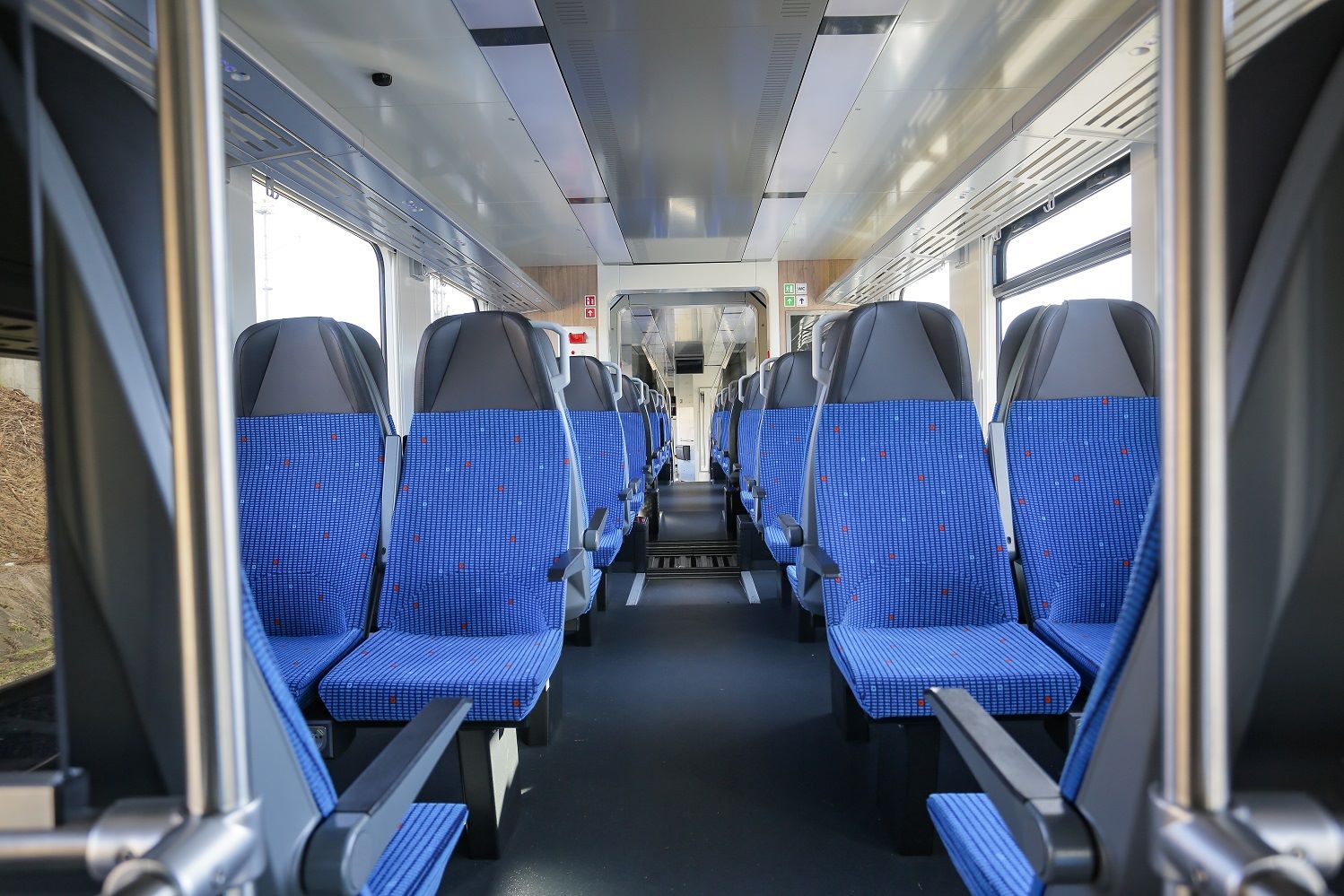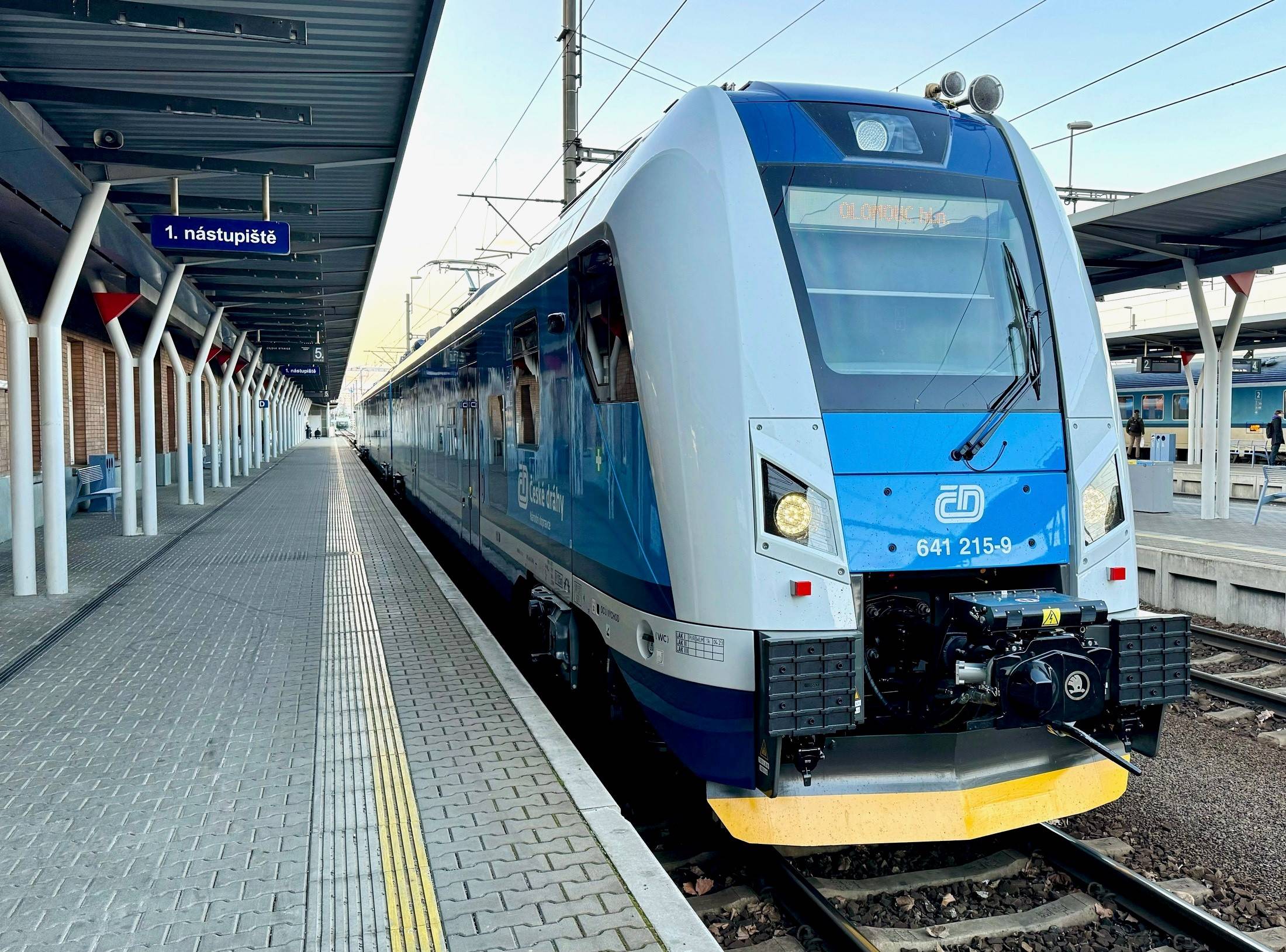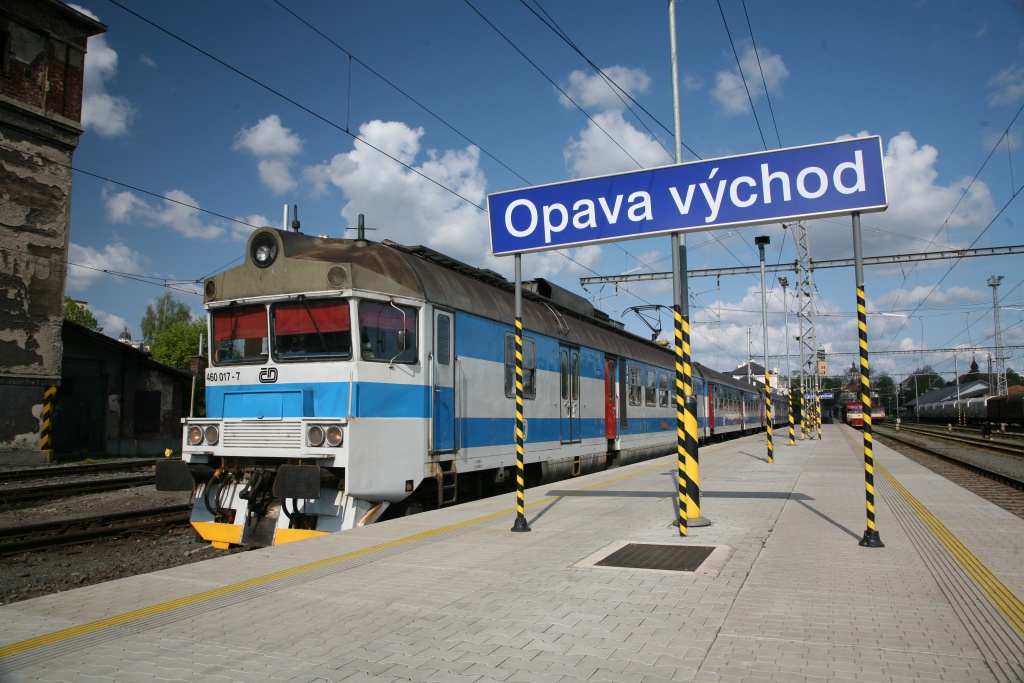These days, České dráhy has taken over already the twentieth three-carriage RegioPanter unit of the 640.2 class supplied by the Škoda Group. Like most of the trains delivered so far, it is intended for the Olomouc Region, where it is to serve the Šumperk – Uničov – Olomouc – Přerov – Vyškov na Moravě, Kouty nad Desnou – Zábřeh na Moravě – Olomouc – Prostějov – Nezamyslice and Olomouc – Přerov – Hranice na Moravě – Vsetín railway lines.
“The twentieth unit represents the completion of the first third of our order for 60 modern barrier-free three-carriage RegioPanter train sets of the 640.2 class. The first two units were put into operation by our company last summer in the Moravian-Silesian Region and the other ones were already heading to the Olomouc Region,” says Jiří Ješeta, Member of the Board of Directors and Deputy Director General of České dráhy for Passenger Transport, and highlights the benefits which the new train sets bring to passengers in the Olomouc Region: “The second-generation RegioPanters have replaced the older train sets made up of locomotives and classical passenger carriages, and within a few weeks they will also eliminate the older 460-class pantograph units. The quality of travelling has literally leaped generations ahead. Today’s trains are air-conditioned, wheelchair accessible, have Wi-Fi, electrical outlets and USB for charging mobile phones and laptops, and a lot of other advantages.”
“After the new Panthers are put into service, the regional passenger rail transport in the Olomouc Region will be ensured almost exclusively by modern vehicles, which is good news for all passengers and a demonstration of the fact that the Czech railway network is able to offer transport worthy of the 21st century. If it is desirable to convince more passengers to use public transport services, there is not any other way than modernising the rolling stock and fleet of carriers,” adds Martin Kupka, Minister of Transport, emphasising the importance of acquisition of these new vehicles into the rolling stock of the national carrier.
A total of 27 new RegioPanters and three older ones from the previous delivery of modern trains will be running in the Olomouc Region.
“Rail transport is absolutely essential for the Olomouc Region. That is why I am very glad that we are succeeding in increasing the comfort of travelling by rail transport, which is an environment-friendly alternative to individual car transport. Through its transport coordinator, the Regional Authority tries to ensure that individual means of public transport can follow up and be linked to each other and that people can travel by these connections, even with one integrated ticket,” says Josef Suchánek, Chairperson of the Council of the Olomouc Region.
After all the RegioPanters for the Olomouc Region have been produced, deliveries of the train units will continue for the Hradec Králové, Central Bohemian and Zlín Regions. The first Central Bohemian unit has also already been produced and is undergoing testing and approval procedures, because it is slightly different in some elements from the trains intended for other regions, e.g. it offers more seats in first class.
“This year we will complete both the contracts for the delivery of a total of 110 new RegioPanters for České dráhy. Four of our Czech plants are involved in the production of the units. In Ostrava, welding and coating of aluminium structures is taking place, and in Doudlevice in Plzeň, production of complete electrical equipment is underway. The final assembly of the vehicles takes place in Šumperk and Plzeň, where the trains are also debugged and tested. In total, this year we will manufacture 8 two-carriage, 46 three-carriage and 4 battery RegioPanter units for the national carrier at our production facilities,” adds Tomáš Ignačák, President for the CZ&SK Regions and Central East and Vice-Chairman of the Board of Directors of Škoda Group.
České dráhy ordered 50 two-carriage electric units of the 650.2 class and 60 three-carriage units of the 640.2 RegioPanter class from the Škoda Group. A total of 280 vehicles will thus be put into operation, offering comfortable seats to almost 21,000 passengers. Production of all the train units is due to be completed by the end of the year.
The “Tornado” train sets are in their last weeks of operation
The new RegioPanter train sets have eliminated conventional train sets pulled by a locomotive from operation and now they are also replacing the electric units of the 460 class, nicknamed “Tornado”. The last six units in operation will gradually terminate their scheduled services by approximately the beginning of May. The first of them will be decommissioned already around Easter, and by May only the new RegioPanter units should be operating. The last units of the 460 class will then remain only as a back-up solution to deal with emergency situations, e.g. in the event of a higher number of planned vehicle repairs.
In connection with the end of the operation of the 460 class at České dráhy, an official closure is being prepared. This will take place on the weekend of 19-21 April 2024, when České dráhy plans an official farewell to the legendary electric units of the 460 and 560 classes in Olomouc. Railway transport fans can look forward to rides as well as photo sessions of various types of “pantograph units”. Details of the event will be published at the beginning of April.
Advantages of RegioPanter electric units
- A modern bright and clear well-arranged air-conditioned interior with ergonomically designed upholstered seats according to requirements of the Regional Authorities in the 2nd class and possibly also in the 1st carriage class;
- Wheelchair-accessible boarding with the vehicle floor at the level of modern platforms without the necessity of climbing stairs; wheelchair passengers will have a possibility of using a platform (with which the units are equipped) to overbridge the space between the station platform and the vehicle floor; at stops with lower station platforms, an additional pull-out step will facilitate the boarding process;
- A modern safe sliding doors operated by push buttons, centrally closed and locked already before the train starts; in addition, for the blind and partially sighted, the front doors of the unit will be equipped with a door remote control system operated by a blind radio and equipped with an acoustic beacon; the doors are equipped with an audio-visual warning signal system before closing and have safety features to prevent people from being trapped;
- A spacious barrier-free toilet accessible also for people in wheelchairs, with a closed system and equipped with a folding table for changing baby nappies;
- Additional services, such as electrical sockets for power supply of portable electronics, such as mobile phones, tablets, etc., including USB ports, Wi-Fi, folding or tilting tables according to the layout of seats and 230 V sockets for charging electric wheelchair batteries, individual reading lamps for each seat;
- Sufficiently large space intended for transport of people in wheelchairs, placement of prams, bicycles and other large luggage;
- A modern audio-visual information system providing information about the train journey and stops to all passengers, including blind, partially sighted or deaf people; information labels in Braille will also be available inside the train for blind and partially sighted passengers.



Legendary electric unit “Tornado” of the 460 class
Electric units of the 460 class were designed for suburban transport in large Czechoslovak conurbations and densely populated areas. They were running, for example, in northern Bohemia, on passenger trains from Ústí nad Labem to Prague or Lysá nad Labem, and were in service in the Olomouc region, Ostrava surroundings and around Košice. During their operation they were routed also e.g. to Vsetín or Žilina.
The units of the 460 class were manufactured by wagon works known as “Vagonka Studénka”, the electrical equipment was supplied by the MEZ Vsetín factory. The prototype was manufactured in 1971 and series production took place between 1974 and 1978. Altogether 43 units of this type were produced.
Initially, five-carriage trains with two end driving carriages and three inserted carriages were in operation. Later, four-carriage or three-carriage units were used as well. The five-carriage unit had a length of 122.5 metres and a fully occupied unit weight was 294 tonnes. Its seating capacity was 336 seats. Each of the motor carriages had all four axles driven and had a power output of 1,000 kW. The units could be coupled and operated in a multi-element control mode.
One of the legendary units of the 460 class will be included among the museum vehicles and will complement the preserved museum “pantograph” train unit of the 560 and 451 classes, which have ceased their operation in recent years.
